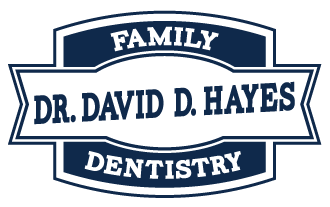Regular cleanings are the best way to maintain good oral health and prevent disease. These appointments consist of a dental prophylaxis to remove plaque by a certified dental hygienist and may also include fluoride, sealants, x-rays, disease screenings and an evaluation of tooth surfaces.
Dental prophylaxis
A dental prophylaxis is a cleaning treatment performed to thoroughly clean the teeth and gums. Prophylaxis is an important dental treatment for stopping the progression of gingivitis and periodontal disease.
Periodontal disease, also known as gum disease, is an infection caused by the build-up of plaque in the gums around your teeth. Because it is sometimes pain free, individuals do not realize they are in danger. When left untreated periodontal disease can cause permanent damage to the gums and bone that support the teeth resulting in potential tooth loss.
We use treatment strategies that work to restore the gums and bones to their original health. In extreme cases, surgery is required. We recommend routine preventative appointments where patients will be screened and encourage patients to follow dental plans at home developed during their appointments.
Initial Exam
Dental examinations help to diagnose disease and generally include screenings for oral pathology, evaluation of growth and development, orthodontic needs assessment, gum disease evaluation, visual examination for tooth decay, diagnostic radiographs (xrays) to examine the bone and surrounding structures not visible to the eye, as well as evaluation of any current restorations, concerns or complaints of the patient/parent.
Risk factors for disease will be discussed, oral hygiene instruction will be provided and nutritional counseling will also be covered.
Flouride
Following the prophylaxis and flossing procedures, fluoride will be applied to your teeth to help maintain the enamel in its strongest condition.
The foods we eat and the things we drink can dissolve some of the mineral content out of the enamel, which is the first stage of a three part process in creating a cavity in a tooth. The fluoride reinforces the tooth structure and can actually reverse a small cavity that is present in only the enamel.
The fluoride applied to your your child’s teeth does not risk damaging the permanent teeth that are still developing in the bone and is similar to a very strong toothpaste. Fluoride varnish is the treatment of choice in this practice since its effects on the enamel last up to thirty six hours.
Varnish is a sticky fluoride application that remains on the tooth throughout the day and is gradually absorbed into the enamel. Because it actually binds to the tooth, the patient can eat or drink immediately following this fluoride application.
Sealants
Sealants are a tough, plastic material designed to stick to the enamel of the tooth in the grooves where food collects. The tooth is prepared with a special cleanser that is quickly applied then rinsed with water.
The sealant material is brushed onto the surface of the tooth and dried with a special curing light to make it hard. The process is very similar to applying nail polish to a fingernail and the teeth do not need to be numb.
Sealants reduce the risk of cavities forming in these grooves that can be difficult to keep clean. These sealants do not last forever and will need to be replaced as they wear away from the tooth surface.
Not all teeth are good candidates for sealants and the doctors will determine which teeth could receive the most benefit from the application.
X-Rays (Radio Graphs)
Dental x-rays are a very important part of the diagnosis of dental disease. They allow the dentist to see portions of the mouth that cannot be seen by the eye.
These items include decay in between the teeth, tumors or cysts present in the bone or surrounding undeveloped teeth. The radio graphs also determine the presence or absence of permanent teeth and their placement.
Modern dental radio graphs are very safe and the state-of-the-art digital equipment utilized by Dr. David Hayes offers much lower radiation exposure than traditional film xrays. The amount of radiation exposure a person receives by living in a brick house all year or on a cross continental airplane flight exceeds the amount of radiation exposure from our equipment.

